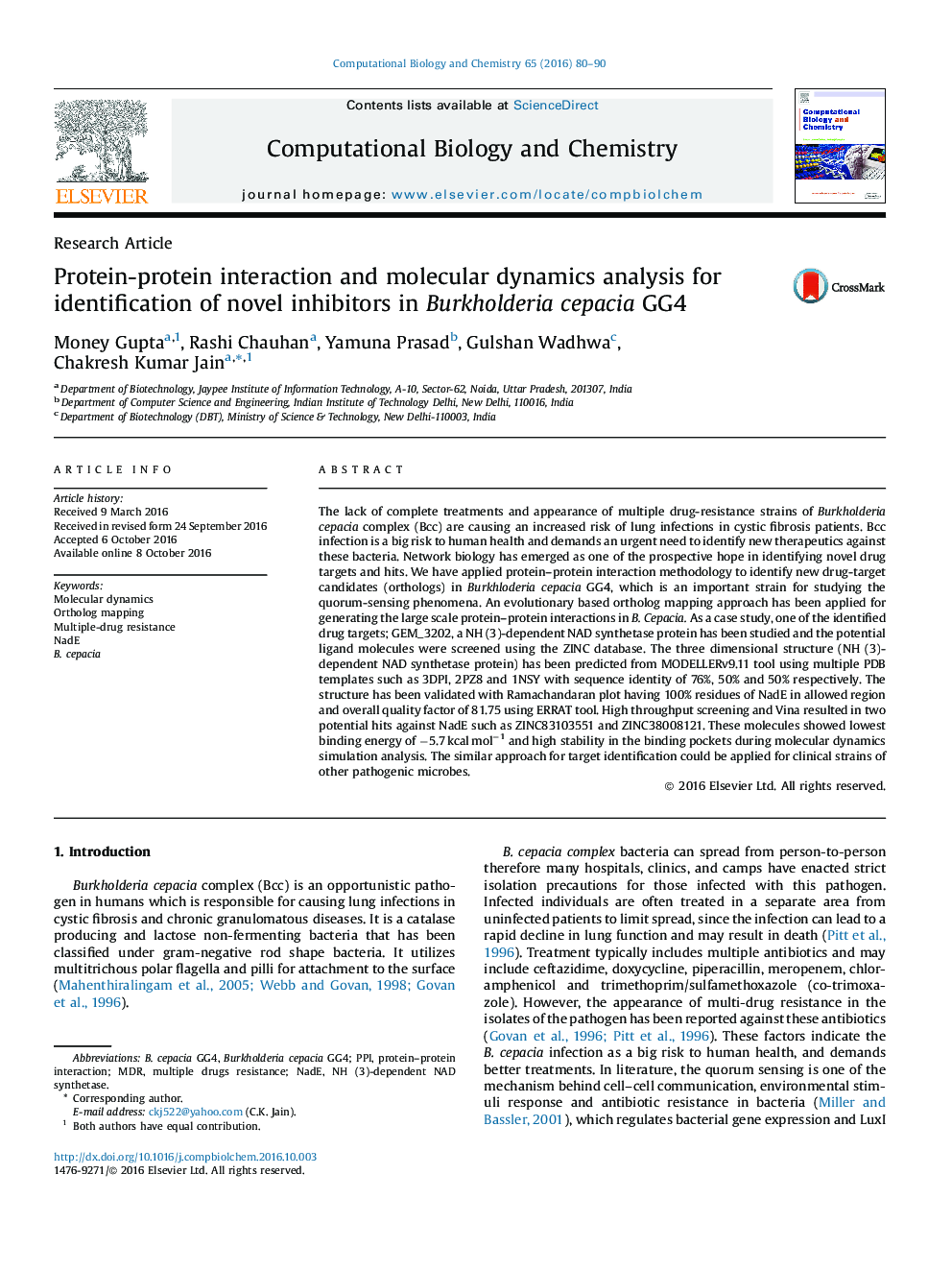| کد مقاله | کد نشریه | سال انتشار | مقاله انگلیسی | نسخه تمام متن |
|---|---|---|---|---|
| 6451262 | 1416282 | 2016 | 11 صفحه PDF | دانلود رایگان |

- Construction of large scale protein-protein interactions in B. cepacia using ortholog mapping approach.
- Network analysis and topological parameters study.
- Identification of Novel hit protein and their structural modeling.
- Performing Docking for novel lead interactions with drug target protein and validations with molecular dynamics approach.
The lack of complete treatments and appearance of multiple drug-resistance strains of Burkholderia cepacia complex (Bcc) are causing an increased risk of lung infections in cystic fibrosis patients. Bcc infection is a big risk to human health and demands an urgent need to identify new therapeutics against these bacteria. Network biology has emerged as one of the prospective hope in identifying novel drug targets and hits. We have applied protein-protein interaction methodology to identify new drug-target candidates (orthologs) in Burkhloderia cepacia GG4, which is an important strain for studying the quorum-sensing phenomena. An evolutionary based ortholog mapping approach has been applied for generating the large scale protein-protein interactions in B. Cepacia. As a case study, one of the identified drug targets; GEM_3202, a NH (3)-dependent NAD synthetase protein has been studied and the potential ligand molecules were screened using the ZINC database. The three dimensional structure (NH (3)-dependent NAD synthetase protein) has been predicted from MODELLERv9.11 tool using multiple PDB templates such as 3DPI, 2PZ8 and 1NSY with sequence identity of 76%, 50% and 50% respectively. The structure has been validated with Ramachandaran plot having 100% residues of NadE in allowed region and overall quality factor of 81.75 using ERRAT tool. High throughput screening and Vina resulted in two potential hits against NadE such as ZINC83103551 and ZINC38008121. These molecules showed lowest binding energy of â5.7 kcal molâ1 and high stability in the binding pockets during molecular dynamics simulation analysis. The similar approach for target identification could be applied for clinical strains of other pathogenic microbes.
129
Journal: Computational Biology and Chemistry - Volume 65, December 2016, Pages 80-90